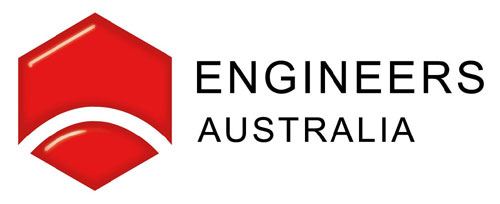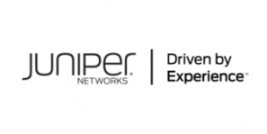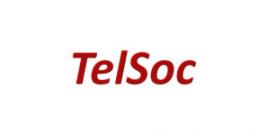LINKS
SPONSOR



PATRONS

SUPPORTERS
![]()
VICTORIA SECTION

26-28 November 2014, Melbourne, Australia
26-28 November 2014, Melbourne, Australia
Keynote Speakers
Professor Moshe Zukerman, (Bio and Abstract (PDF)), City University of Hong Kong, China, will talk on "Teletraffic insights for Network Design."
Mr Wojtek Malewski, (Bio (PDF) and Abstract (PDF)), Hewlett-Packard Australia, will talk on "SDN Innovations with Virtual Application Networks. Simplifying, Scaling and Automating the Network."
Mr Al da Silva, (Bio and Abstract (PDF)), Juniper Networks, will talk on "Software Defined Networking and its applicability to Cloud, Data Centres and Data Centre Interconnect networks."
Keynote and Workshop on National Broadband Network
Dr Mark Gregory, (Bio), RMIT University, Australia, will talk on the "National Broadband Network" and this will be followed by a workshop.
ATNAC 2014 is technically co-sponsored by IEEE Communications Society. Accepted and presented papers will be published in the conference proceedings and submitted to IEEE Xplore as well as other Abstracting and Indexing (A&I) databases.
Co-Located with the Engineers Australia Convention 2014
10 student travel assistance grants of AUD$600 will be made for selected accepted student papers that are presented at ATNAC 2014. To apply send an application letter and a letter of support from your supervisor to info at itnac.org.au before 30 September 2014.

Important Dates - Register here
Late papers should be sent directly to info at itnac.org.au
Full Paper Submission Deadline : 8th July 2014 Extended
Paper Acceptance Notification : 31st July 2014
Final Paper Submission Deadline : 20th September 2014
Early bird registration deadline : 30th September 2014
ATNAC 2014 will include a conference best paper award and best paper authors will be invited to provide a paper to the 2015 special issue of the Australasian Journal of Information, Communication Technology and Applications.
Focus
With the increasing number of emerging robust networks, the challenge to design new networking protocols and techniques are never ending. With the imminent deployment of 4G and other emerging technologies, the demand for better service and quality has never been greater. ATNAC has been the forum for researchers and engineers to present and discuss topics related to advanced telecommunication network technologies, services and applications.
Novel contributions are presented in the form of keynote speeches by international experts, peer-reviewed technical papers, and posters. ATNAC 2014 seeks to address and capture highly innovative and state-of-the-art research from academia, communications industry and standardization bodies.
ATNAC is an international conference for the presentation of research outcomes covering timely and relevant aspects concerning optical, wired and wireless telecommunication networks and applications. Contributions are welcome on all advanced research and particularly (but not limited to) on the following topics:
- Networks and Management
- Internet Technologies
- IPv6 Mobility and Vehicular Networks
- Mobile Cellular and Wireless Networks
- Network-Based Applications
- Optical Communications
- Wireless Sensor Networks
- Power Efficiency and Sustainability
Topic Descriptions
Networks and Management
- General topics related to networks and applications
- Broadband Network Management
- Regional and Remote Networks
- Next generation network regulation
- Communication technology fundamentals
Internet Technologies
In the current and the envisioned future Internet, a variety of new technologies and applications is emerging. New networking architectures and design concepts are to be developed which consider interactions with the real world, as well as emerging issues like energy-efficiency or socio-economic aspects. A holistic view is necessary which takes into account the network of the Future, the Internet of services, media and enterprise Internet, but also the Internet of Things. However, there are still significant challenges for the theoretical understanding and on the deployment of Internet technologies.
The goal of the Internet technology track is to bring together people from academia and industry and to stimulate discussions on future Internet applications and future wireline and wireless Internet architectures to accelerate their development. We seek papers describing original, previously unpublished research results.
Topics of interest include, but are not limited to:
- Emerging Technologies:
- Virtualization technology and programmability of FI elements
- Service-oriented architectures and service composition
- Future Internet routing schemes or transport concepts
- IPv6 and its derivatives
- Economic Traffic Management
- Mesh networks, ad-hoc networks, sensor networks, femtocells
- Self-configuring and self-optimizing cellular networks
- Dynamic Spectrum Access and Cognitive Radio
- Emerging Applications:
- Content-centric networks
- Social networks
- Multilevel and location-aware mobile services
- Cloud computing
- Software as a service
- Grid computing
- Peer-to-peer networks and overlays
- Multimedia support e.g. vehicle-2-X communications
- Internet governance
- Emerging Issues:
- Energy efficiency and energy awareness
- Network application awareness
- Network management systems and control plane
- Coarse-grained QoS solutions for scalable Future Internet services
- Quality of Experience
- Support of mobility of devices, users, sessions, networks, and services
- Security and privacy mechanism
- Flexibility to realize new innovations
IPv6 mobility and vehicular networks
- Mobility management and topology control
- Location-based services and positioning
- Micro and macro-mobility
- Mobility, location and handoff management
- Mobile and wireless IPv6
- IPv6 security
- Wireless broadband mobile access
- ad hoc and sensor networks
- Wireless multicasting
- Wireless mesh networks
- Topology control in wireless networks
- Physical and MAC layer issues
- IPv6 GeoNetworking
- Cross-layer design and optimization for vehicular networks and cognitive networks
- Security issues for vehicular and cognitive networks
Mobile & Wireless Networks
The field of mobile and wireless networks is a rapidly evolving area. Recent advances in technologies for emerging mobile and wireless networks, including mobile ad hoc networks, vehicular networks, B3G/4G cellular networks, among others, have the potential to enable many new mobile and wireless services and applications that can profoundly impact our lives in positive ways.
The goal of this track is to provide a forum for the presentation of new advances, ideas, and solutions from theoretical, experimental, and applied research to address specific new challenges and emerging issues concerned with this field. We seek papers describing original, previously unpublished research results.
Topics of interest include, but are not limited to:
- Wireless access and routing protocols
- Cross-layer design optimisation
- Green, low power, energy efficient and sustainable networking
- Nature and bio-inspired approaches to networking
- Network-based mobile positioning and tracking systems
- Cognitive and cooperative principles for networking
- Inter-working, integration, and convergence issues
- Mobile social and ambient networks
- Mobile and fixed wireless broadband access networks
- QoS provisioning and resource management
- Terminal and network mobility
- Traffic engineering, congestion and admission control
- Techno-economic analysis and business models for emerging networks
- Novel network-enabled applications and services
- Networking standards and regulations
- Security and privacy issues
Network-Based Applications
Network-Based Applications are a fast growing area for network services.
The goal of this track is to provide a forum for the presentation of new advances, ideas, and solutions from theoretical, experimental, and applied research to address specific new challenges and emerging issues concerned with this field. We seek papers describing original, previously unpublished research results.
Topics of interest include, but are not limited to:
- Network-Based Applications
Optical Communications
Optical communication technologies will continue to be increasingly important in supporting the future Internet's expected scaling requirements of billions of users, their IT needs and aggregated huge bandwidths. Over the last two decades, optical communication technologies have increased the transmission capacity per fiber by several orders of magnitude, achieving Tbit/s transmissions. If the data traffic continues to increase at the current progressional rates, a further increase in the transmission capacity of several orders of magnitude will be needed over the coming decades. This implies that future optical systems and networks should be able to support capacities well over Peta bit/s. However, the current technologies have already begun to reveal several fundamental limits; the electronic speed limit, the Shannon and quantum limit, and the IP bottleneck. The future technologies must overcome these limits ensuring sustainable growth of network traffic. The optical communications theme aims to provide a forum for the presentation and discussion of significant progress of research, development and applications of cutting-edge technologies in optical communication devices, subsystems, systems and networks.
Topics of interest include, but are not limited to:
- Next Generation Broadband Access Networks, Subsystems and Systems
- Optical Ethernet, EPON/GPON, 10Gb/s Ethernet, 100Gb/s Ethernet
- WDM Access Networks, WDM-PON
- Wired/wireless convergence, Telecom/broadcast convergence, IPTV
- Hybrid optical-wireless access networks, Radio-over-fiber
- Higher order modulations and OFDM in optical access networks
- Fiber-to-the-Home/Fiber-to-the-Curve (FTTH/FTTC)
- Grid/cloud computing over optical networks
- Green Internet and energy efficiency
- Next Generation Optical Networks, Subsystems and Systems
- Optical core network architecture, design, control, and management
- Optical cross-connect/add-drop multiplexers, ROADM, and switching subsystems
- Optical packet/burst/flow switching networks and subsystems
- Large capacity optical transmission, WDM, OTDM
- OFDM, higher order modulations and advanced modulation formats in photonics
- Energy efficient optical networks
- Impairments mitigations and performance monitoring techniques
- Digital signal processing in photonics systems
- Free Space optical communications
- Optical Fiber, Components, and Devices
- Fiber design, characterization, fabrication, installation,, and maintenance
- Photonics Crystal fibers
- Polymer/non-silica fibers
- Optical active device and modules
- Optical passive device and modules
- Fiber Bragg grating, fiber lasers/amplifiers, MUX/DEMUX, and demodulators
- Silicon photonics
- Optical MEM
Wireless Sensor Networks
The field of wireless sensor networks is now getting more and more mature, but new design concepts, experimental and theoretical findings, and applications continue to emerge at a rapid pace. Furthermore, there are still significant challenges for the theoretical understanding and practical application of sensor networks.
The goal of the sensor networking track is to bring together people from academia and industry who have interest in the area of wireless ad hoc and sensor networks. We seek papers describing original, previously unpublished research results.
Topics of interest include, but are not limited to:
- Networking protocols: MAC, routing, transport, next generation
- Cooperative communication approaches
- Cross-layer design and optimization
- Broadcasting, multicasting, geocasting
- Quality-of-service, reliability and fault tolerance, coverage and connectivity
- Security
- Supplementary services: localization, time synchronization
- Body sensor networks
- Operating Systems and Software
- Middleware and Macroprogramming
- Information and query processing
- Prototypes, field experiments, testbeds
- Theoretical limits, network scaling
- Novel applications


